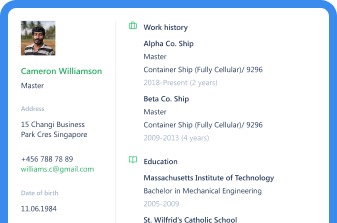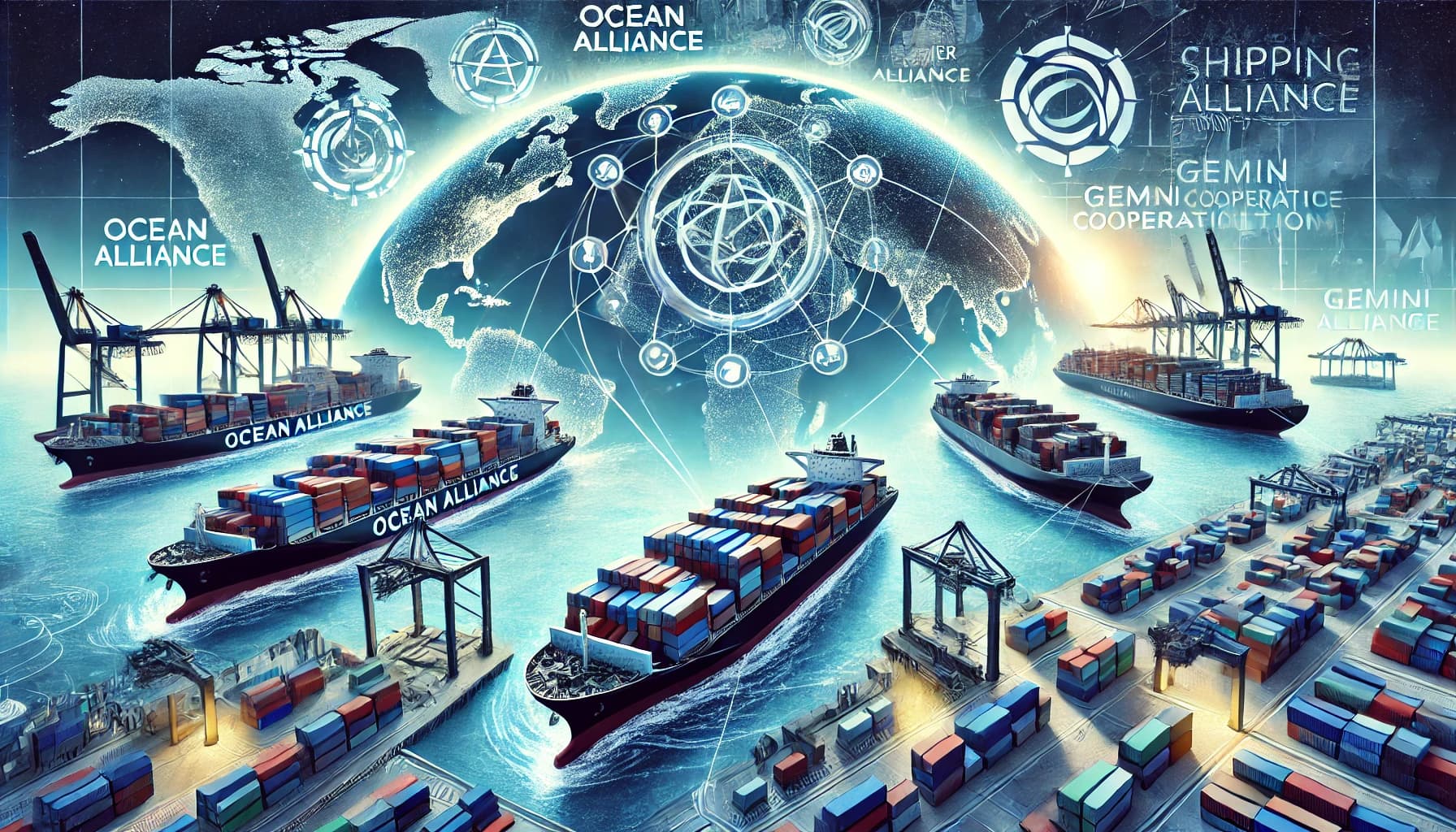Have you ever wondered what a pilot boat is and what a marine pilot’s job involves? If so, this is the blog post for you. A pilot boat is a small, fast boat that is used to take maritime pilots to and from the port that they work out of and the ships that they are tasked with piloting.
These ships may be inbound or outbound - i.e. coming into port or leaving it. But why are marine pilots needed? Surely the master (the captain) or the navigational officer can steer their own vessel into and out of the port or harbor?
Read more: Everything You Need to Know About Gas Carrier Ships
Let’s take a closer look at what pilot boats actually are, why they exist, and their long and rich history.
What are pilot boats and what do they do?
This is one in a series of posts all about different types of boats and ships and while we’ve written about the vessels that everyone knows about, such as cargo and container ships, chemical tankers, fishing boats, ferries and cruise ships, we’re also interested in finding more about some of the unsung heroes of the seas.
Alongside other vessels in the merchant fleet - which refers to any boat that ‘works for its living' and isn’t used just as a leisure or pleasure craft - such as fireboats, lightships, mining ships and icebreaker vessels, the pilot boat has an important role to play.

But first of all, what exactly is a marine pilot?
What does a marine pilot do?
If you’ve ever wondered “what is a marine pilot?” or “what is a harbor pilot?”, we have the answer. A maritime pilot’s job is to safely guide vessels into and out of a port or harbor. They are seafarers themselves, but ones who have specific knowledge of an often dangerous or congested waterway.
Read more: Everything You Need to Know About Coaster Vessels
This may be a container terminal, a harbor or even the mouth of a river. Pilots have the local knowledge that is required to navigate these waters, which a non-local master or navigator may not.
The marine pilot boards the incoming or outgoing ship and takes over navigational duties to ensure the safe passage of the vessel as she enters and leaves the port.
How to pilot a harbor
The following is a breakdown of how a marine pilot typically pilots a harbor:
Boarding the ship
- Transfer to the ship: The pilot boards the ship usually via a pilot boat, which brings them from shore to the incoming vessel. This can sometimes involve climbing a rope ladder from the pilot boat to the larger ship, often while both vessels are moving.
- Introduction: Upon boarding, the pilot meets with the ship’s captain and bridge crew to discuss the passage plan and any specific instructions or concerns.

Assessment and planning
- Reviewing information: The ship pilot reviews navigational charts, tidal information, weather conditions, and any Notices to Mariners relevant to the harbor.
- Passage plan: The pilot and the ship’s crew collaborate to create or review a detailed passage plan, outlining the route, speed, and maneuvers needed to safely navigate the harbor.
Taking control
- Assuming command: While the ship’s captain remains in command, the maritime pilot takes over the navigation of the vessel. The captain and crew assist by following the pilot’s instructions.
- Communication: The pilot communicates with the ship’s crew, tugboats, and harbor authorities using VHF radio to coordinate movements and ensure safe passage.
Navigating the harbor
- Navigational skills: Using their extensive local knowledge, the pilot navigates the vessel through the harbor, making precise maneuvers to avoid hazards such as shallow waters, other vessels, and navigational obstacles.
- Use of instruments: The pilot uses various navigational aids such as radar, GPS, electronic chart display and information systems (ECDIS), and visual markers to guide the ship.
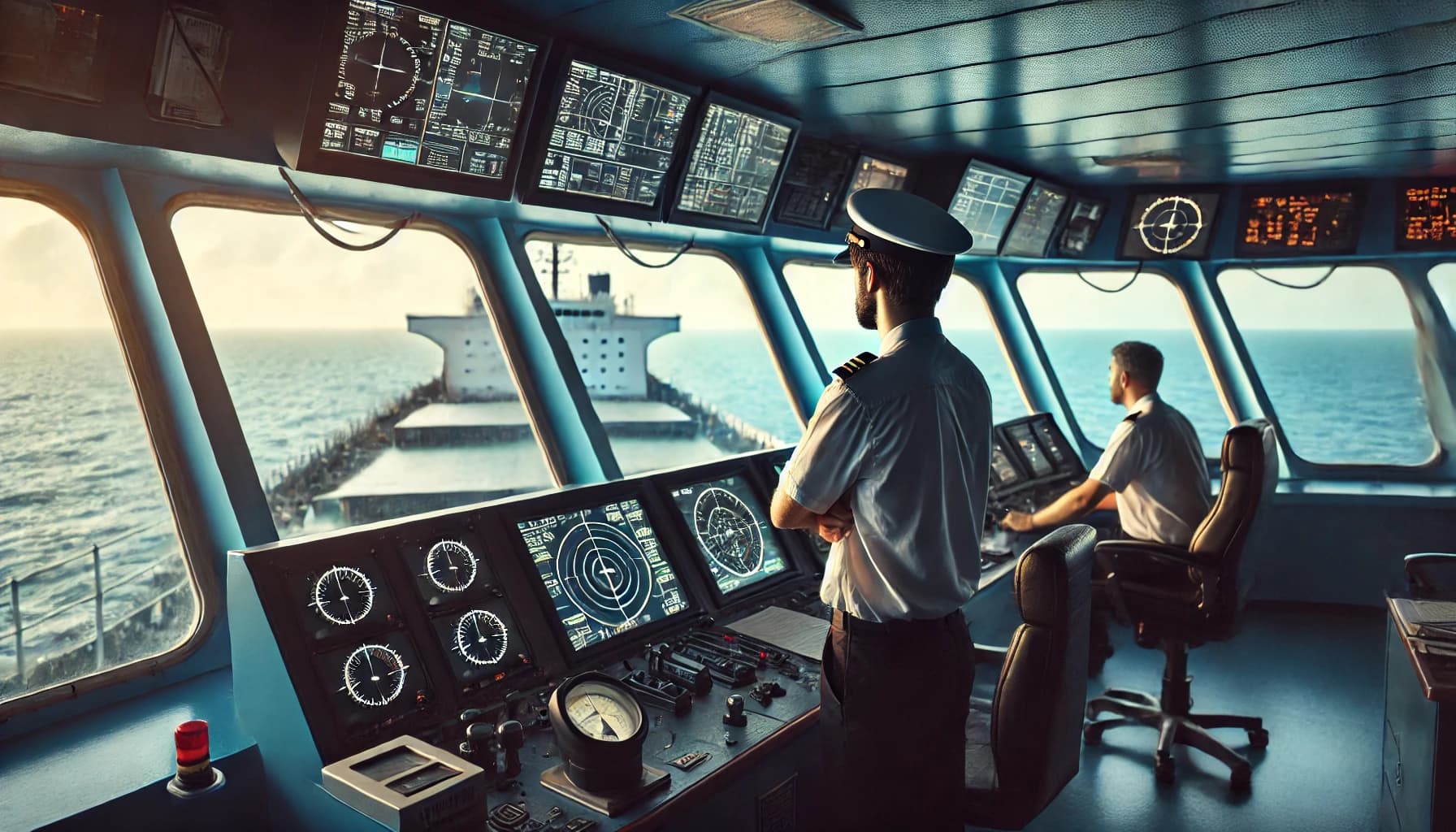
Maneuvering
- Speed and course adjustments: The pilot gives orders to adjust the ship’s speed and course as needed, often coordinating with tugboats for additional maneuvering assistance.
- Docking: For docking, the pilot carefully guides the ship into its berth, ensuring it aligns correctly with the dock. This may involve slow, precise maneuvers and coordination with dockside personnel.
Safety and compliance
- Adherence to regulations: The pilot ensures that all maneuvers comply with local maritime regulations and safety standards.
- Emergency preparedness: The pilot is prepared to handle emergencies and make quick decisions to avoid accidents.
Disembarking
- Completion of passage: Once the vessel is safely docked or has exited the harbor, the pilot disembarks, usually by transferring back to a pilot boat.
- Reporting: The maritime pilot may provide a report on the passage and any notable observations to the harbor authorities and the ship’s captain.
Marine pilots bring their expertise in local waterways, currents, tides, and port regulations to ensure the safe and efficient movement of ships in and out of harbors. Their role is crucial in preventing accidents and ensuring the smooth operation of maritime traffic in confined and busy harbor areas.
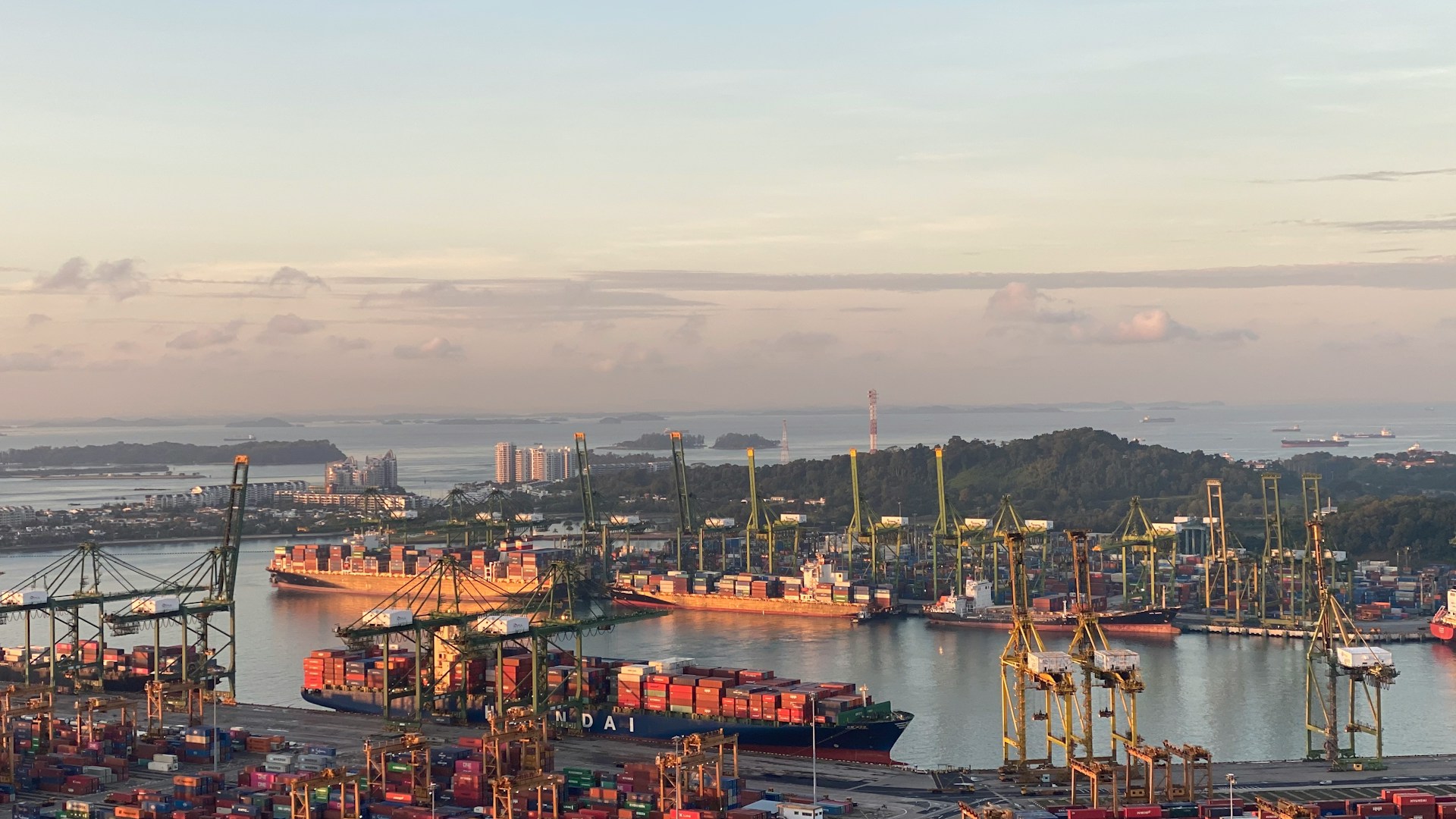
What is a marine pilot’s boat?
The work of a marine pilot involves a fair amount of real and credible danger. Consider that they need to somehow get themselves from their pilot boat and onto a much larger ship - while both are in transit.
It is essential that the pilot is able to safely and efficiently board the vessel so that they are able to quickly reach the bridge of the ship where they can then assume control.
Read more: Everything You Need to Know About Bulk Carriers
It is for this reason that pilot boats are normally equipped with powerful engines that can both quickly reach incoming vessels and also maneuver in busy and often difficult or dangerous waters.
Advanced navigational and communication equipment will also be found onboard to enable the crew to locate their designated vessel and to communicate clearly with it.
And although small - particularly compared to the vessels they service - pilot boats must be strongly constructed in order to withstand heavy seas and to be able to take the impact of bumping against the colossal ships that they are pulling up alongside.
Previously, pilot boats were built using steel and although there are some such boats still working, most modern pilot vessels are constructed from lightweight materials such as fiberglass and aluminum, affording them both strength and speed.

Read more: Everything You Need to Know About Supramax Vessels
Most pilot boats are also painted a highly visible color such as yellow, orange or red so that they can be easily identified, even in overcast or poor weather or sea conditions.
And just so there is no mistaking their role in a busy harbor or port, pilot boats usually have the word ‘pilot’ painted in large letters on either side of their hull. They also fly a flag that is, in many countries, white over red.
Similarly, at night a pilot boat has additional navigation lights consisting of a round white light above a round red light.
Pilot boats are also usually identified by a large number painted on the side. In the days before the modern pilot boat, this number would have been displayed on the sail. Which takes us nicely on to…
The history of pilot boats
Marine pilot jobs and pilot boats have been around a long time. In fact they go as far back to ancient Greek and Roman times. Which, of course, meant that the original pilot vessels were not constructed of fiberglass and kitted out with a high speed engine!
The early pilot boats were, therefore, sail boats, usually single masted, lightweight yet powerfully designed boats that could operate efficiently and quickly when needed.
In fact, the earliest marine pilots were often local fishermen who were employed by the incoming or outgoing vessel’s masters. However over time it became clear that these part-time pilots needed to be properly insured and that the act of pilotage (i.e. piloting a vessel) needed to be regulated.
This led to the ports and harbors licensing pilots for their own jurisdiction, although for the most part these pilots were still self-employed and despite being insured and under tighter control, were still relying on their cumbersome fishing boats to transport them to and from the ships needing to be piloted.

And so it transpired that a different type of lighter, more streamlined boat was needed - and one that wasn’t filled with nets, lines, tackle and other fishing equipment.
Read more: Everything You Need to Know About Car Carrier Ships
And hence the pilot boat was born and thus developed into the nippy little boats we see in harbors across the world today.
How do pilots know which vessels need their assistance?
Pilots, and the other crew members onboard a pilot boat, are no longer part-fisherman, part-pilot and these vessels are operated by experienced seafarers who know their local waters like the backs of their hands.
They must also be adept at navigating through and into and out of busy waterways.
And of course, they must be able to pull up alongside the towering hull of a much larger vessel and allow the pilot to safely leave their own boat and board the ship to be piloted. This is often by swinging from the pilot boat onto a ladder that is hanging down the container ship or tanker’s hull.
But how do pilot boat crews know which ship they need to board?
Back in the days of sail-powered pilot boats, this was on a first come first served basis and the pilot/fisherman who reached an incoming ship first would be the one to get the business.
Read more: Everything You Need to Know About Feeder Vessels
These days the industry is a little less gung-ho and a pilot will be scheduled in advance of a vessel’s arrival.
Typically, the crew onboard the incoming vessel will send a request for a pilot to that harbor’s port authority or a local pilotage company.
A pilot boat will then be dispatched, will meet the vessel, and the pilot will climb aboard and take control of the ship until it is safely docked in its designated berth.
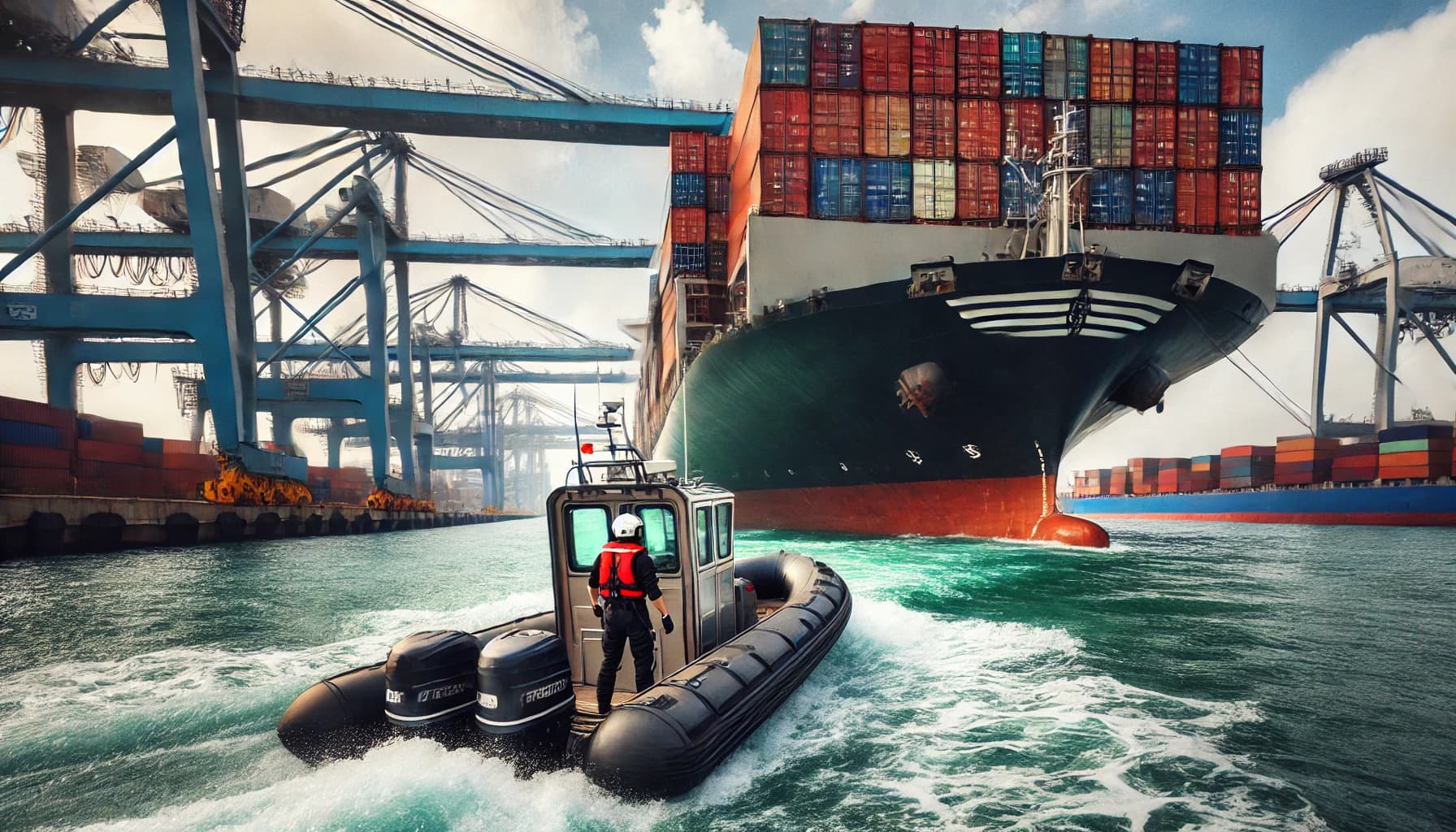
The pilot will then disembark from the vessel, climb back onto the pilot boat and return to shore.
Finally, when not being used to transport pilots to and from vessels, the powerful little pilot boats can sometimes be used to tow other vessels and assist in search and rescue operations.
What are pilot flags?
We mentioned the flags that a pilot boat displays earlier, but vessels will also hoist a flag to indicate their status with regards to pilotage.
In maritime pilotage, pilot flags play a crucial role in signaling the presence and status of a marine pilot on board a vessel.
These flags are visual indicators used to communicate specific information to other ships and port authorities, ensuring safe and efficient navigation, especially in busy or confined waters.
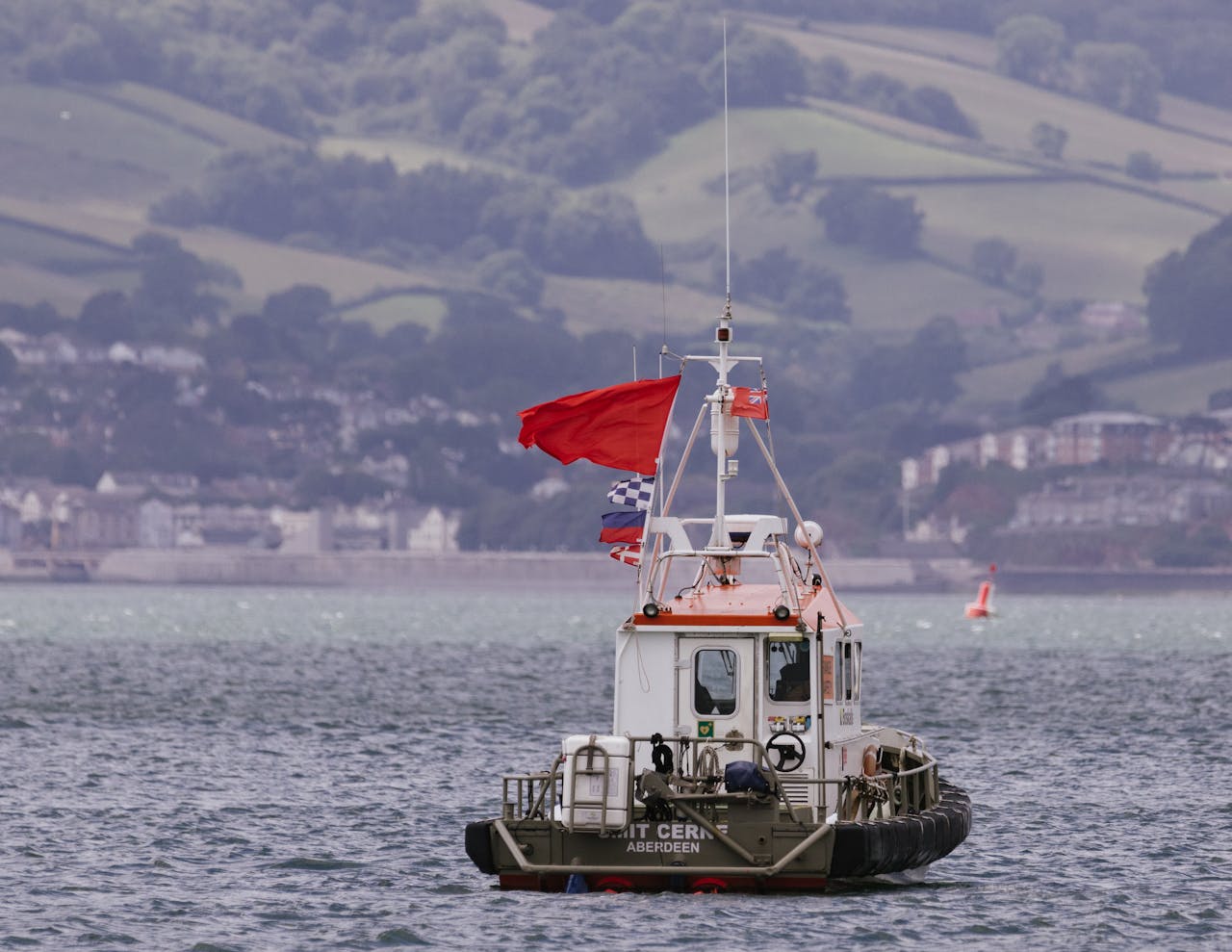
Flags relate to letters of the alphabet and each flag has an allocated meaning. The "H" flag is the Hotel signal flag in the International Code of Signals. When flown alone, the "H" flag indicates that a pilot is on board.
This flag helps other vessels recognize that the ship is under the guidance of a professional pilot, who is navigating it through potentially hazardous areas like harbors or narrow channels. The “H” flag is a vertical band of white and a vertical band of red.
Additionally, the "G" flag, or Golf signal flag, can be used to indicate that a vessel requires a pilot. When flown alone, the "G" flag signals to pilot boats and port authorities that the ship is requesting pilotage services. This flag consists of six alternating vertical yellow and blue stripes.
This system of pilot flags ensures clear communication and coordination, reducing the risk of collisions and grounding, and enhancing overall maritime safety. By using these standardized signals, maritime operations are conducted smoothly, with pilots efficiently guiding vessels in and out of ports, maintaining the flow of marine traffic, and protecting both ships and the marine environment.
Read more: Everything You Need to Know About RoRo Ships
Do commercial vessels have to use a pilot boat?
In most cases, pilotage is a mandatory service for vessels, designed to ensure the safety and protection of the port's property and equipment. It is a critical component of port operations and must be available at all times.
However, exceptions to this requirement can be granted depending on the specific port and certain criteria. These criteria may include the captain’s familiarity with the port, the frequency of the vessel’s visits, the size and gross tonnage of the vessel, prevailing weather conditions, and the type of cargo being transported.

In some countries, however, failing to secure pilotage services when required can result in fines and even imprisonment.
And there you have it - everything you need to know about pilot boats and marine pilot jobs.
For a closer look at some other vessels, check out our articles about watercraft as varied as dredgers, heavy lift vessels, LPG and LNG tankers, crane ships and oil tankers!
And if there’s a particular boat or ship that we haven’t yet covered in this series and you’d like to find out more about, drop us a line on our Facebook, Twitter or LinkedIn pages and we might just write an article about it!
Read the previous article in this series: Everything You Need to Know About Cable Laying Ships
Read the next article in this series: Everything You Need to Know About Offshore Vessels
This blog post was originally published on July 13th 2023 and updated on August 29th 2024

Eve Church
Eve is Martide's content writer, publishing regular posts on everything from our maritime recruitment and crew planning software to life at sea. Eve has been writing professionally for more than two decades, crafting everything from SEO-focused blog posts and website landing pages to magazine articles and corporate whitepapers.
UK
